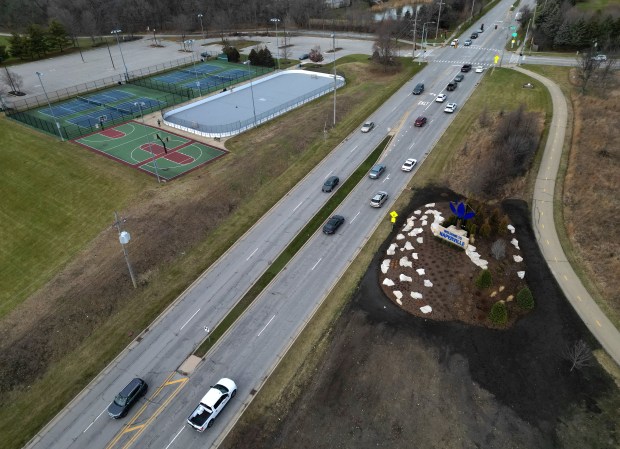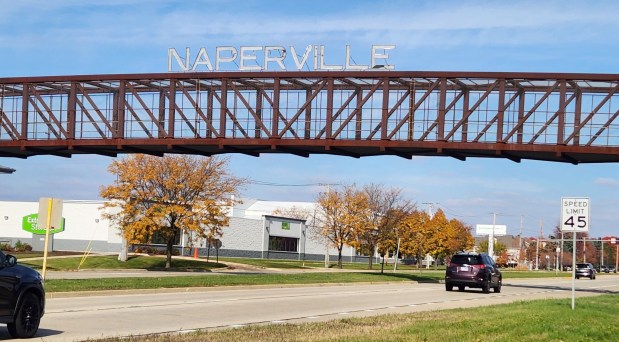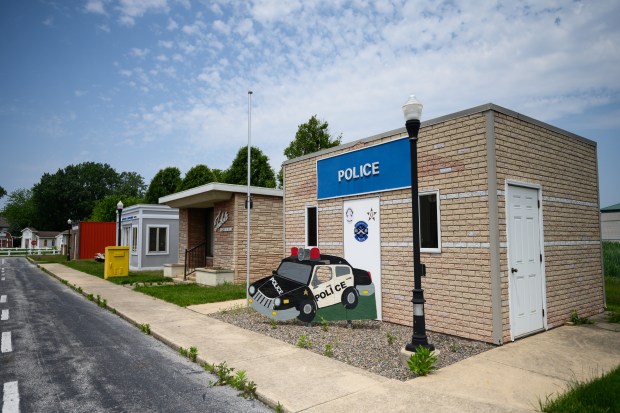Naperville is gauging community feedback on a slew of revamped entrance signs that have gone up around the city before it moves forward with future beautification projects.
On Monday, the city launched a survey seeking to evaluate residents’ satisfaction with the aesthetics of its entryways. It can be accessed through the city’s website, www.naperville.il.us, and will be open through Aug. 16.
The survey is a follow-up to a series of beautification efforts the city has made over the past two and a half years.
At the end of 2021, the Naperville City Council allocated $250,000 in its 2022 budget for public works staff to make visual improvements throughout the city.
Beautification efforts were split into a series of projects. Those included: a new entrance sign by the train tracks leading into downtown Naperville; a sign installed on a pedestrian bridge over Route 59, north of 103rd Street, spelling out Naperville in LED lights; updated population signs; and various lighting, painting and landscaping projects.
A sign installed on the pedestrian bridge over Route 59, north of 103rd Street, spells out Naperville. At night the LED lights are blue but can be changed for seasons, holidays and other reasons. (Suzanne Baker/Naperville Sun)
Perhaps most noticeable is the city’s new entrance sign at the point where Bolingbrook meets Naperville.
Located off Washington Street just south of Royce Road, the welcome sign is hard to miss. It was inspired by the city’s 50-year-old logo, which depicts a large tree with water running beneath it.
At the center of the gateway, the words “Welcome to Naperville” in blue lettering line a limestone base. On top of the sign, a synthetic tree trunk stands tall with a crown of blue leaves. To round out the structure, a city skyline of sorts — replicated in metal — extends out from either side of the tree.
Surrounding the sign are slabs of limestone and a fresh layer of vegetation, including native plants and pollinators.
The city’s new entrance signs had generated a handful of messages from residents prior to the survey, according to Public Works Director Dick Dublinski. Some of the feedback centered on the Washington Street sign, with most concerned its $100,000 cost, he said. A few were about the design, and “some were just saying how pleasing they thought it was,” he said.
Online, the Washington Street sign spurred both critique and praise. Late last year, a photo of the display posted to Nextdoor, an online social networking site, generated more than 200 comments, with some calling the sign an eyesore and others lauding its singularity.
An aerial view of the city’s new “Welcome to Naperville” sign on Washington Street near Royce Road provides a unique perspective on the how it was constructed at the border of Naperville and Bolingbrook. (File photo)
A more formal survey “will help us cast a wider net for feedback and help us understand how this signage is being perceived,” Dublinski said.
“We want open and honest feedback as data for moving forward,” he said.
Survey results will be used to guide future beatification ventures, Dublinksi said. Asked if staff have any particular pending beautification projects in mind, Dublinksi said the city has a few initiatives already underway — such as a native vegetation program and a banner program — and the sign survey will, in part, guide next steps to “see what residents think may align or not align with our plans.”
Survey results also will be shared with city council members during budget talks due this fall to help guide what beautification projects the council prioritizes and funds in coming years.
“The more data we can gather for our city council to make an informed decision, the better,” Dublinksi said.




